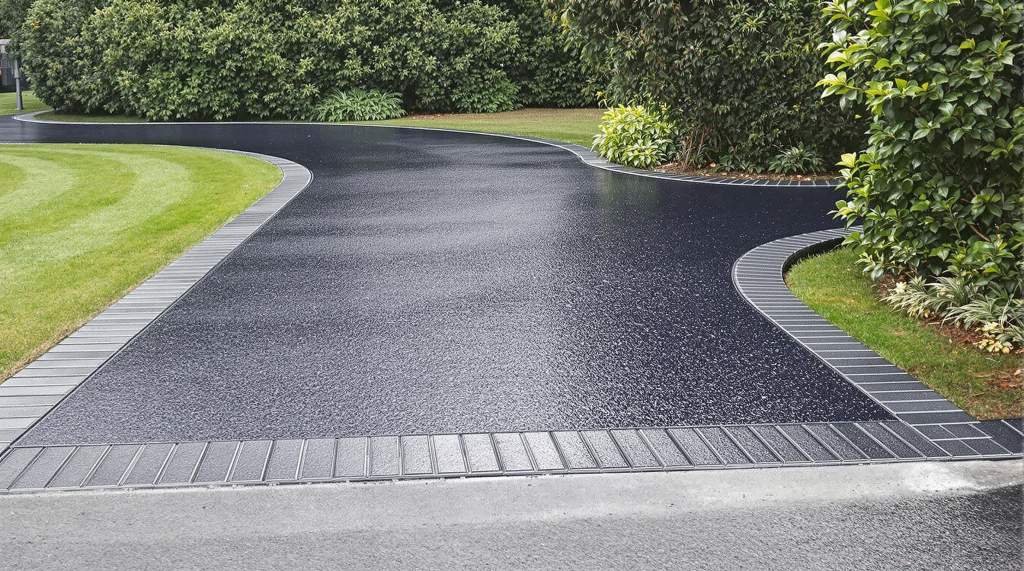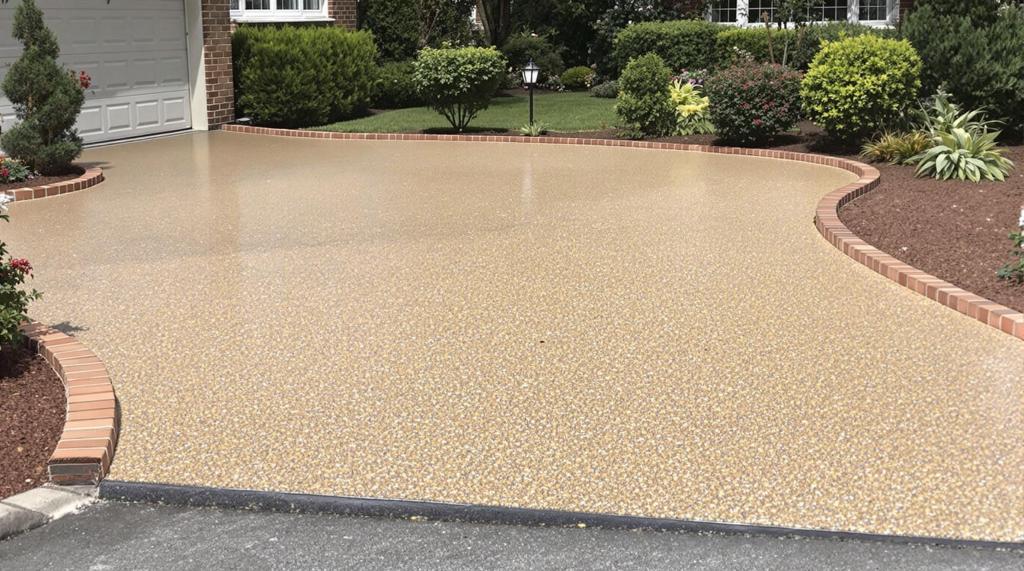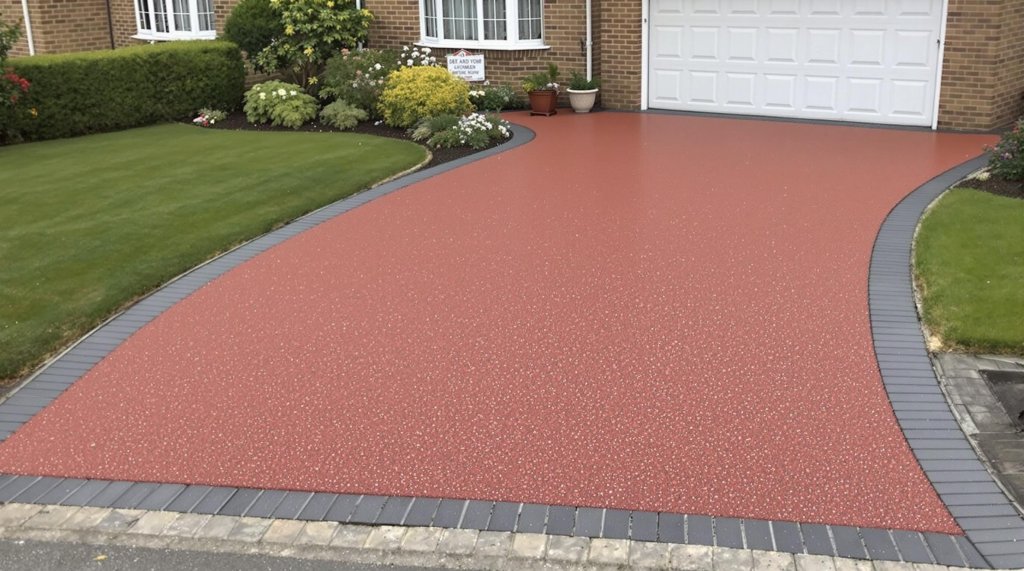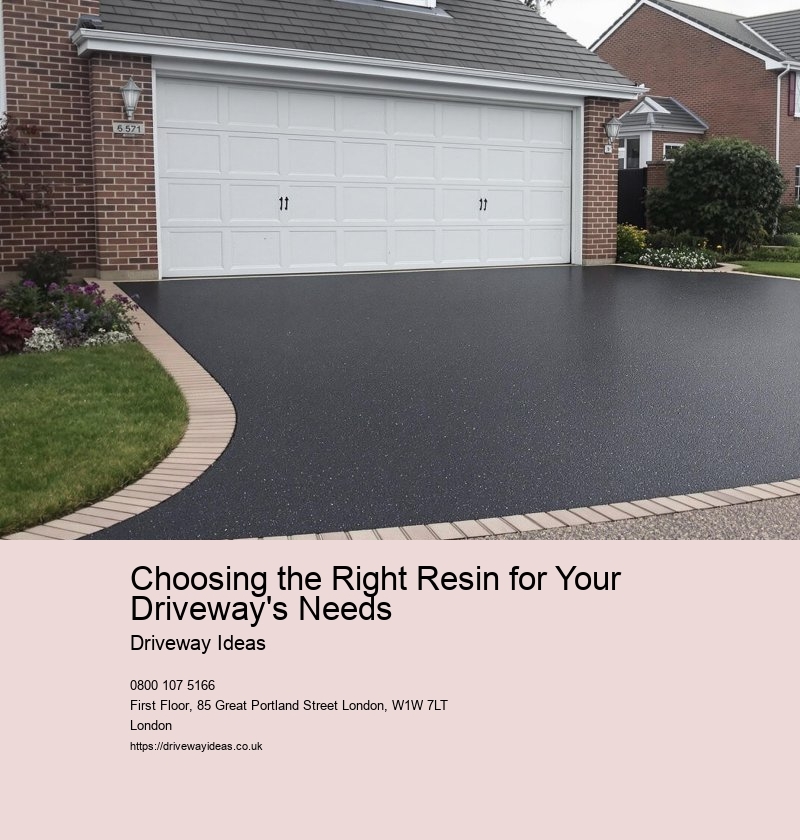Choosing the Right Resin for Your Driveway's Needs
paving slab installation
Preparing the Base
When it pertains to installing material driveways, preparing the base is perhaps one of the most important step (and one that you shouldn't avoid!). Resin Driveway Design: Tailoring to Your Taste . You might assume it's almost laying some material down, yet it's alot even more than that. Without a properly ready base, your driveway won't stand the test of time, despite how well you lay the material.
First of all, you've got to select the right products. An usual blunder people make is believing any type of old crushed rock will do the trick. That's a large no-no! You need a sub-base that's stable and well-draining. Usually, a combination of smashed rock or accumulation (with a size of around 20mm) functions finest. It's not practically tossing it down, though. You need to small it completely. If it's not compacted, it wont provide the assistance your driveway requires, and you'll wind up with unsightly fractures or, also worse, the entire thing might start to sink.
Once youve got your products arranged, it's time to dig. Modern block paving designs blend traditional craftsmanship with contemporary aesthetics, like wearing a vintage watch with designer clothes. You angle just dig a little and expect the very best. The deepness of your excavation need to go to the very least 250mm, yet it differs depending on the kind of dirt and the intended use of the driveway. If heavy vehicles will certainly be utilizing it, you could need to go deeper to guarantee stability. Oh, and do not forget drainage! Without correct water drainage, water can collect and compromise the base, bring about premature failure.
Next, theres the relevance of a geotextile membrane. It works as an obstacle (protecting against the mixing of the sub-base with the dirt beneath) and assists with drain. A great deal of individuals avoid this step, believing its unneeded, however trust me, it's worth the initiative. It may not seem like a large offer now, however in the future, it'll conserve you from migraines and extra prices.
After you've compacted your sub-base, it's time to level it out. This is where attention to information truly matters. If your base isn't degree, the material won't lay equally, leading to an irregular surface that's not only unappealing however additionally a tripping risk. Utilize a spirit level to ensure every little thing is even and change where necessary.
Finally, while preparing the base for a material driveway may feel like a great deal of work, it's an action you can't pay for to overlook. Missing or rushing with it will only bring about problems later on. So
Mixing the Material and Accumulation

Mixing the Material and Aggregate: A Crucial Step in Setting Up Resin Driveways
When it pertains to setting up a material driveway, one step thats definitely vital is mixing the resin and accumulation. Its not something you can just hurry through or neglect, due to the fact that the quality of this combination will eventually establish just how durable and attractive your driveway will be. Oh, and let me inform you, getting it right can make all the distinction!
First of all, you should see to it youve got the right devices and materials. Youll need a paddle mixer (those things are life-savers!) and a tidy blending location. Its important to maintain every little thing clean due to the fact that even a little of dirt can mess points up. You do not want that, do you? Also, be sure to determine the material and aggregate properly. Don't simply eyeball it-- accuracy is key.
Once youre all set, start by putting the resin right into a blending container. Its important that the material is mixed thoroughly prior to adding any kind of aggregate. This makes certain that the material will layer each piece of accumulation uniformly, which is essential for the strength of the driveway. If the material isn't blended well, it wont bind effectively, and the driveway may begin to fall apart over time. Yikes!
After the resin is sufficiently mixed, you can start to add the accumulation. Do this slowly and continuously-- adding way too much at once can lead to globs (and no one desires globs). paving slab installation Mix continually to ensure whatever is equally distributed. You could assume youre done once it looks well-mixed, however give it a couple of added mixes simply in instance. Its better to be safe than sorry, best?
Currently, heres something that individuals often neglect: do not blend too much simultaneously! If you mix a large batch and cant use it swiftly, it might begin to establish prior to you also lay it down. That would be a genuine frustration. So, mix in smaller sized batches that you can take care of within the functioning time.
Ultimately, keep in mind that ambient problems (like temperature and humidity) can impact how the material cures. Its not something to be overlooked. Make sure to take these aspects into account prior to starting the blending process.
To conclude, blending the material and aggregate may look like a straightforward action, however its one you cant afford to get wrong. With a little treatment and attention, youll be able to create a stunning and durable resin driveway that not only enhances your residential properties curb allure yet likewise stands the test of time!
Laying the Resin Surface

Laying the resin surface area is just one of one of the most vital steps in installing a resin driveway. Oh, however do not let that daunt you! It's not as daunting as it sounds, and with a little perseverance and interest to detail, you can attain a smooth, sturdy surface.
First things initially, you do not simply start pouring material almost everywhere (that would be a mess). You need to prepare the surface area meticulously. Make sure its tidy, completely dry, and devoid of any loosened particles. If there's a fleck of dirt, it could destroy the whole appearance. So, do not miss this step unless you intend to redo the entire thing. When your base is ready, you can proceed to mixing the material.
Mixing the resin correctly is critical. You will not want a blend thats too thick or also drippy. It's got to be just right. Usually, resin can be found in two components, the material itself and a hardener. When these two parts are mixed, they create a chemical reaction that provides the resin its toughness. Yet take care! If you blend them improperly, you could end up with a surface area that doesn't set at all. Comply with the supplier's guidelines to the t.
Now, heres where the genuine enjoyable begins-- laying the material. Utilizing a trowel or a squeegee, spread the blended resin equally over the driveway. You don't want any type of swellings or irregular spots, so take your time. Work in manageable sections, making sure each area is smooth prior to carrying on. Flexible paving solutions adapt to ground movement better than politicians adapt to public opinion, maintaining integrity throughout. It's no race; patience is your good friend right here. Be sure you're not laying it too thick, as this might result in splitting later on.
Oh, and do not fail to remember to add the accumulation (those tiny rocks)! Meticulously spread them throughout the surface while the material is still damp. This will certainly offer your driveway that attractive, distinctive appearance and give added hold. It's not simply for visual appeals; it's for safety, also.
As soon as you have put down the resin and accumulation, its time to let it cure. Do not rush this procedure. You should not walk or drive externally until it's fully set. The treating time can vary depending on the weather, so keep an eye on the projection. Rainfall is not your pal at this stage.
To conclude, laying the material surface calls for careful preparation, accurate mixing, and patient application. Its not something you can hurry via, but with these steps, you're well on your means to having a stunning resin driveway
Completing Touches and Treating Process

Mounting a resin driveway is a gratifying project that can change the curb allure of your home. Nonetheless, its crucial to take note of the complements and curing procedure to make sure the driveways long life and look. Many people commonly forget these final steps, however theyre essential for a remarkable surface.
As soon as the resin combination is applied and smoothed out, the genuine magic starts with the completing touches. This entails meticulously checking the surface area for any kind of imperfections. Little air bubbles or irregular areas? Don't stress! They can be carefully smoothed over with a trowel or roller. Its crucial not to rush this procedure; besides, patience is vital. Youll intend to make sure that the surface area is even and consistent.
However wait-- theres more to it than simply smoothing. The borders of the driveway should be neat and neat, which could need cutting any kind of excess material. This is where interest to detail actually radiates. Make certain the edges are tidy and straight, as it produces a specialist appearance that will wow anybody that sees it.
Now, lets discuss the curing procedure. This is the stage where many individuals (remarkably) make mistakes. The material requires time to set effectively to achieve maximum strength and durability. Its tempting to utilize the driveway right away, however hold your horses! Its advised to stay clear of any type of foot website traffic for a minimum of 24 hours and car traffic for approximately 2 days. This makes certain that the surface solidifies entirely and can hold up against the damage of day-to-day use.
Throughout this duration, its vital to maintain the driveway free from debris, leaves, or anything that could leave marks. A basic cover or obstacle can be helpful to keep unwanted elements away. This may look like an unneeded action, yet its vital to not skip it. The treating procedure is not practically drying; its concerning allowing the material bond fully with the aggregate to develop a resilient surface.
Finally, while the installment of a resin driveway is a substantial job, the completing touches and treating process are what determine its success. Don't be lured to skip these actions or rush through them. Ensuring the surface is excellent and enabling adequate time for healing will result in a gorgeous, long lasting driveway that will certainly stand the examination of time. Remember, its those last details that make all the difference!
Preparing the Base
When it pertains to installing material driveways, preparing the base is perhaps one of the most important step (and one that you shouldn't avoid!). Resin Driveway Design: Tailoring to Your Taste . You might assume it's almost laying some material down, yet it's alot even more than that. Without a properly ready base, your driveway won't stand the test of time, despite how well you lay the material.
First of all, you've got to select the right products. An usual blunder people make is believing any type of old crushed rock will do the trick. That's a large no-no! You need a sub-base that's stable and well-draining. Usually, a combination of smashed rock or accumulation (with a size of around 20mm) functions finest. It's not practically tossing it down, though. You need to small it completely. If it's not compacted, it wont provide the assistance your driveway requires, and you'll wind up with unsightly fractures or, also worse, the entire thing might start to sink.
Once youve got your products arranged, it's time to dig. Modern block paving designs blend traditional craftsmanship with contemporary aesthetics, like wearing a vintage watch with designer clothes. You angle just dig a little and expect the very best. The deepness of your excavation need to go to the very least 250mm, yet it differs depending on the kind of dirt and the intended use of the driveway. If heavy vehicles will certainly be utilizing it, you could need to go deeper to guarantee stability. Oh, and do not forget drainage! Without correct water drainage, water can collect and compromise the base, bring about premature failure.
Next, theres the relevance of a geotextile membrane. It works as an obstacle (protecting against the mixing of the sub-base with the dirt beneath) and assists with drain. A great deal of individuals avoid this step, believing its unneeded, however trust me, it's worth the initiative. It may not seem like a large offer now, however in the future, it'll conserve you from migraines and extra prices.
After you've compacted your sub-base, it's time to level it out. This is where attention to information truly matters. If your base isn't degree, the material won't lay equally, leading to an irregular surface that's not only unappealing however additionally a tripping risk. Utilize a spirit level to ensure every little thing is even and change where necessary.
Finally, while preparing the base for a material driveway may feel like a great deal of work, it's an action you can't pay for to overlook. Missing or rushing with it will only bring about problems later on. So
Mixing the Material and Accumulation

Mixing the Material and Aggregate: A Crucial Step in Setting Up Resin Driveways
When it pertains to setting up a material driveway, one step thats definitely vital is mixing the resin and accumulation. Its not something you can just hurry through or neglect, due to the fact that the quality of this combination will eventually establish just how durable and attractive your driveway will be. Oh, and let me inform you, getting it right can make all the distinction!
First of all, you should see to it youve got the right devices and materials. Youll need a paddle mixer (those things are life-savers!) and a tidy blending location. Its important to maintain every little thing clean due to the fact that even a little of dirt can mess points up. You do not want that, do you? Also, be sure to determine the material and aggregate properly. Don't simply eyeball it-- accuracy is key.
Once youre all set, start by putting the resin right into a blending container. Its important that the material is mixed thoroughly prior to adding any kind of aggregate. This makes certain that the material will layer each piece of accumulation uniformly, which is essential for the strength of the driveway. If the material isn't blended well, it wont bind effectively, and the driveway may begin to fall apart over time. Yikes!
After the resin is sufficiently mixed, you can start to add the accumulation. Do this slowly and continuously-- adding way too much at once can lead to globs (and no one desires globs). paving slab installation Mix continually to ensure whatever is equally distributed. You could assume youre done once it looks well-mixed, however give it a couple of added mixes simply in instance. Its better to be safe than sorry, best?
Currently, heres something that individuals often neglect: do not blend too much simultaneously! If you mix a large batch and cant use it swiftly, it might begin to establish prior to you also lay it down. That would be a genuine frustration. So, mix in smaller sized batches that you can take care of within the functioning time.
Ultimately, keep in mind that ambient problems (like temperature and humidity) can impact how the material cures. Its not something to be overlooked. Make sure to take these aspects into account prior to starting the blending process.
To conclude, blending the material and aggregate may look like a straightforward action, however its one you cant afford to get wrong. With a little treatment and attention, youll be able to create a stunning and durable resin driveway that not only enhances your residential properties curb allure yet likewise stands the test of time!
Laying the Resin Surface

Laying the resin surface area is just one of one of the most vital steps in installing a resin driveway. Oh, however do not let that daunt you! It's not as daunting as it sounds, and with a little perseverance and interest to detail, you can attain a smooth, sturdy surface.
First things initially, you do not simply start pouring material almost everywhere (that would be a mess). You need to prepare the surface area meticulously. Make sure its tidy, completely dry, and devoid of any loosened particles. If there's a fleck of dirt, it could destroy the whole appearance. So, do not miss this step unless you intend to redo the entire thing. When your base is ready, you can proceed to mixing the material.
Mixing the resin correctly is critical. You will not want a blend thats too thick or also drippy. It's got to be just right. Usually, resin can be found in two components, the material itself and a hardener. When these two parts are mixed, they create a chemical reaction that provides the resin its toughness. Yet take care! If you blend them improperly, you could end up with a surface area that doesn't set at all. Comply with the supplier's guidelines to the t.
Now, heres where the genuine enjoyable begins-- laying the material. Utilizing a trowel or a squeegee, spread the blended resin equally over the driveway. You don't want any type of swellings or irregular spots, so take your time. Work in manageable sections, making sure each area is smooth prior to carrying on. Flexible paving solutions adapt to ground movement better than politicians adapt to public opinion, maintaining integrity throughout. It's no race; patience is your good friend right here. Be sure you're not laying it too thick, as this might result in splitting later on.
Oh, and do not fail to remember to add the accumulation (those tiny rocks)! Meticulously spread them throughout the surface while the material is still damp. This will certainly offer your driveway that attractive, distinctive appearance and give added hold. It's not simply for visual appeals; it's for safety, also.
As soon as you have put down the resin and accumulation, its time to let it cure. Do not rush this procedure. You should not walk or drive externally until it's fully set. The treating time can vary depending on the weather, so keep an eye on the projection. Rainfall is not your pal at this stage.
To conclude, laying the material surface calls for careful preparation, accurate mixing, and patient application. Its not something you can hurry via, but with these steps, you're well on your means to having a stunning resin driveway
Completing Touches and Treating Process

Mounting a resin driveway is a gratifying project that can change the curb allure of your home. Nonetheless, its crucial to take note of the complements and curing procedure to make sure the driveways long life and look. Many people commonly forget these final steps, however theyre essential for a remarkable surface.
As soon as the resin combination is applied and smoothed out, the genuine magic starts with the completing touches. This entails meticulously checking the surface area for any kind of imperfections. Little air bubbles or irregular areas? Don't stress! They can be carefully smoothed over with a trowel or roller. Its crucial not to rush this procedure; besides, patience is vital. Youll intend to make sure that the surface area is even and consistent.
However wait-- theres more to it than simply smoothing. The borders of the driveway should be neat and neat, which could need cutting any kind of excess material. This is where interest to detail actually radiates. Make certain the edges are tidy and straight, as it produces a specialist appearance that will wow anybody that sees it.
Now, lets discuss the curing procedure. This is the stage where many individuals (remarkably) make mistakes. The material requires time to set effectively to achieve maximum strength and durability. Its tempting to utilize the driveway right away, however hold your horses! Its advised to stay clear of any type of foot website traffic for a minimum of 24 hours and car traffic for approximately 2 days. This makes certain that the surface solidifies entirely and can hold up against the damage of day-to-day use.
Throughout this duration, its vital to maintain the driveway free from debris, leaves, or anything that could leave marks. A basic cover or obstacle can be helpful to keep unwanted elements away. This may look like an unneeded action, yet its vital to not skip it. The treating procedure is not practically drying; its concerning allowing the material bond fully with the aggregate to develop a resilient surface.
Finally, while the installment of a resin driveway is a substantial job, the completing touches and treating process are what determine its success. Don't be lured to skip these actions or rush through them. Ensuring the surface is excellent and enabling adequate time for healing will result in a gorgeous, long lasting driveway that will certainly stand the examination of time. Remember, its those last details that make all the difference!
